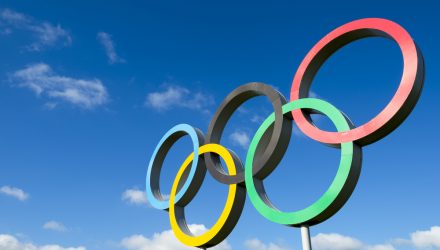As Omicron continues to affect countries globally, the first Olympic athletes began arriving at the Olympic Villages in Beijing, Zhangjiakou, and Yanqing, reports the International Olympic Committee. The Olympics are set to begin February 4 and will run through February 20 in Beijing.
In total, there are 2,900 athletes competing in this year’s games in 109 different events. Those housed at the Olympic Village in Beijing will be competing in the ice sports; the Zhangjiakou Olympic Village will house athletes competing in freestyle skiing, snowboarding, ski jumping, biathlon, and cross-country skiing; and the Yanqing Olympic Village will hold athletes competing in luge, bobsled, alpine skiing, and skeleton.
With Omicron continuing to affect most of the world, China has enacted a closed loop around the Villages, sealing them and the workers off at the beginning of last month. This comes on the heels of many regional and city lockdowns due to Omicron as China continues to practice its zero-tolerance policy regarding COVID-19 variants.
Athletes will travel on separate rail systems from the general public when needed in their own closed-loop circuits, and all athletes must be vaccinated upon arrival or else be quarantined. All participants will be tested daily as well. The Villages will all be converted once the games are over, with the Beijing one being converted to apartments and the Zhangjiakou and Yanqing Villages converting to apartments, hotels, and businesses.

Image source: Zhangjiakou Municipal People’s government courtesy of IOC
China has renewed its focus on sustainability and has committed to carbon-neutral games, with all venues being powered by renewable energy and natural carbon dioxide refrigeration systems being used at all of the ice venues for the first time in the winter Olympics. All venues for the games, whether new or reused from the 2008 Beijing games, were certified to national sustainable construction standards.
For new competition areas created in Zhangjiakou and Yanqing, environmental impact assessments were completed and wildlife were protected by the creation of wildlife corridors, restricting construction at night, and transplanting plants.
Investing in China’s Renewables Movement
China is currently the world leader in total renewable energy capacity, holding 31% of the world’s capacity. In the midst of the regulatory crackdown in China, this industry has continued to perform strongly and is investing domestically and globally.
The KraneShares MSCI China Clean Technology Index ETF (KGRN) capitalizes on investing in clean technology in China’s growing economy.
KGRN tracks the MSCI China IMI Environment 10/40 Index and is based on five clean technology themes: alternative energy, energy efficiency, green building, sustainable water, and pollution prevention.
It allows investors direct exposure to ESG market movers in China such as Li Auto Inc at 8.57%, Xpeng Inc at 7.79%, and BYD Co at 7.79%.
The ETF has an expense ratio of 0.78% and $167 million in assets under management.
For more news, information, and strategy, visit the China Insights Channel.

